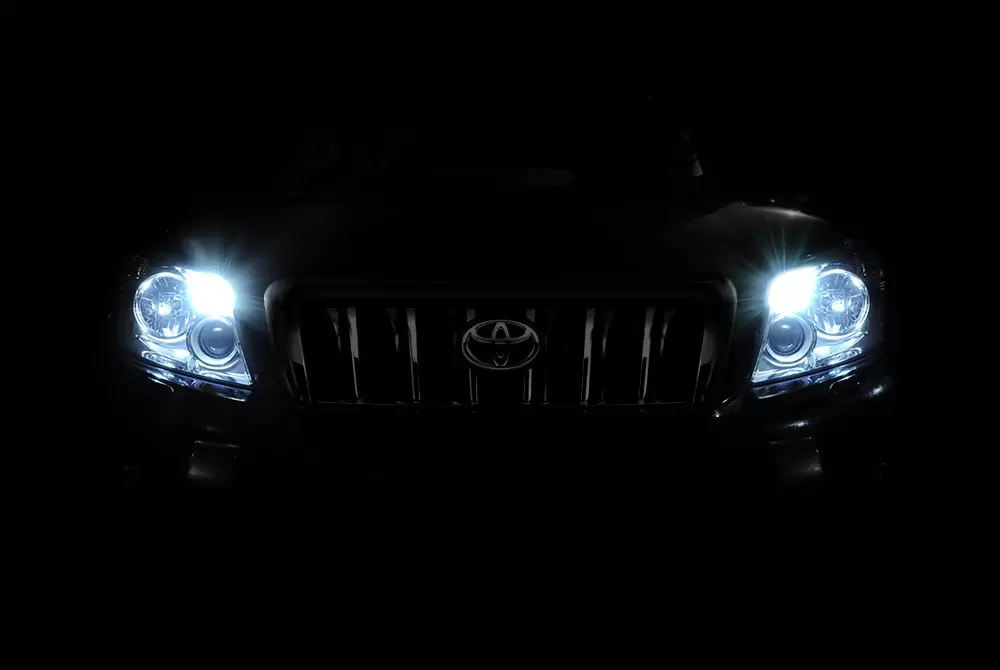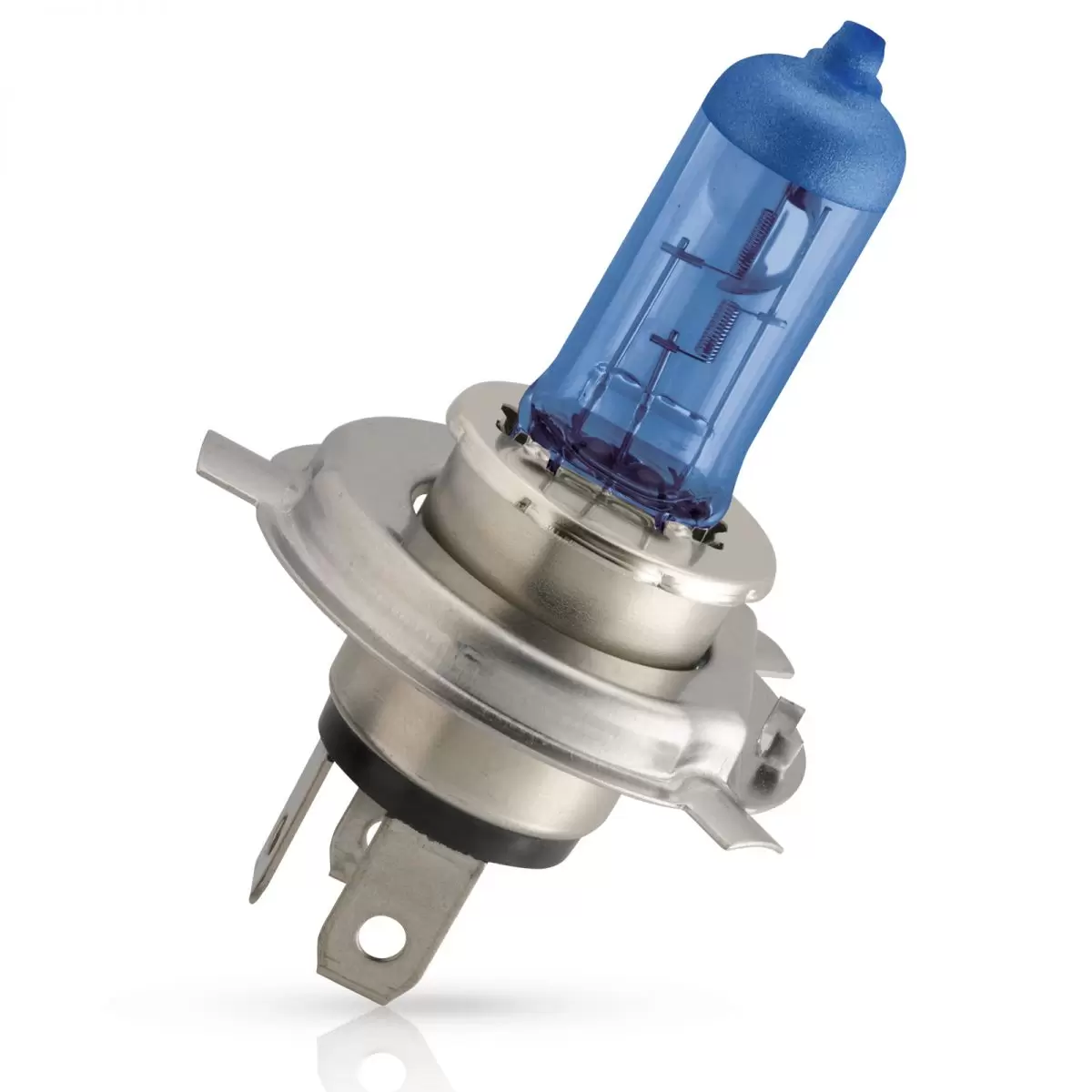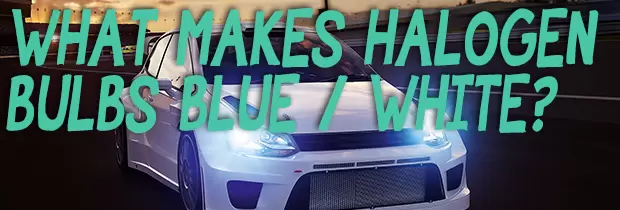Measuring Bulb Colour
First, it’s important to know how a bulb’s colour is measured so you can accurately compare them. Manufacturers indicate bulb colour through colour temperature, which is measured in Kelvins. The higher the colour temperature, the more blue a bulb will appear. Typical halogen headlight bulbs range from around 3200K to 3500K. In contrast, HID bulbs are often closer to 5000K and may even be as high as 7000K.
Halogen bulbs appear bluer than HID bulbs at lower colour temperatures. That’s because halogen bulbs don’t have the brightness of HID bulbs to counteract the blue tint. While HID bulbs are street legal at colour temperatures as high as 6000K, halogen bulbs at 5000K are typically not street legal.
Halogen bulbs don’t work in the same way as HID bulbs. HID bulbs produce light thanks to the reaction between two electrons inside the bulb and the xenon gas used to fill the bulb. This gives a naturally cooler light. In contrast, halogen bulbs must be altered in some way to make them appear blue. There are two methods that most manufacturers use to make halogen lights bluer—the bulbs are either filled with xenon gas or simply coloured blue to alter their appearance.
Xenon-Filled Bulbs
Real HID bulbs produce light thanks to a reaction between the electrons and the xenon gas inside the bulb. The process is similar to the way neon lights work, creating a very bright light. To imitate this look, halogen bulbs can be filled with xenon gas. However, this doesn’t change the way the halogen bulb actually works. It’s still powered by a tungsten filament, and not xenon.
Xenon-filled halogen bulbs won’t perform any better than standard halogen bulbs. Instead, the xenon is mostly used as a marketing technique, capitalizing on the popularity of HID bulbs.
 Blue Coated Bulbs
Blue Coated Bulbs
Other halogen bulbs are covered with a blue coating to make them appear more like HID bulbs. This is a great option if you just like the blue look of HID bulbs, but don’t want to bother with upgrading your headlights. Many styling bulbs have a blue coating that raises their colour temperature and can make their light appear closer to natural daylight.
Be sure to check whether a bulb is road legal before installing it in your vehicle. Many blue-coated halogen headlight bulbs are meant only for styling purposes and are not road legal. Bulbs that are considered too blue, such as those with a colour temperature near 5000K, can get you a ticket or fine in many places.
Brightest White Halogen Bulbs
If you’re more concerned with getting the brightest, whitest light possible, check out the many maximum performance halogen bulbs on the market. These may not be as blue as HID bulbs or halogen styling bulbs, but they are brighter and usually have a higher colour temperature than standard halogen bulbs. Improved technology, such as better glass, coating, and filaments, make maximum performance bulbs brighter. Some also have a coating to give them a cooler colour temperature, making them appear more similar to HID bulbs.
Make sure you buy your headlight bulbs from a reputable source, so you know exactly what you’re getting. Knock-off bulbs often have a blue coating that makes them appear cooler, but can sacrifice performance. PowerBulbs sells only authentic, name-brand bulbs that deliver the best performance and look.

























 Close
Close